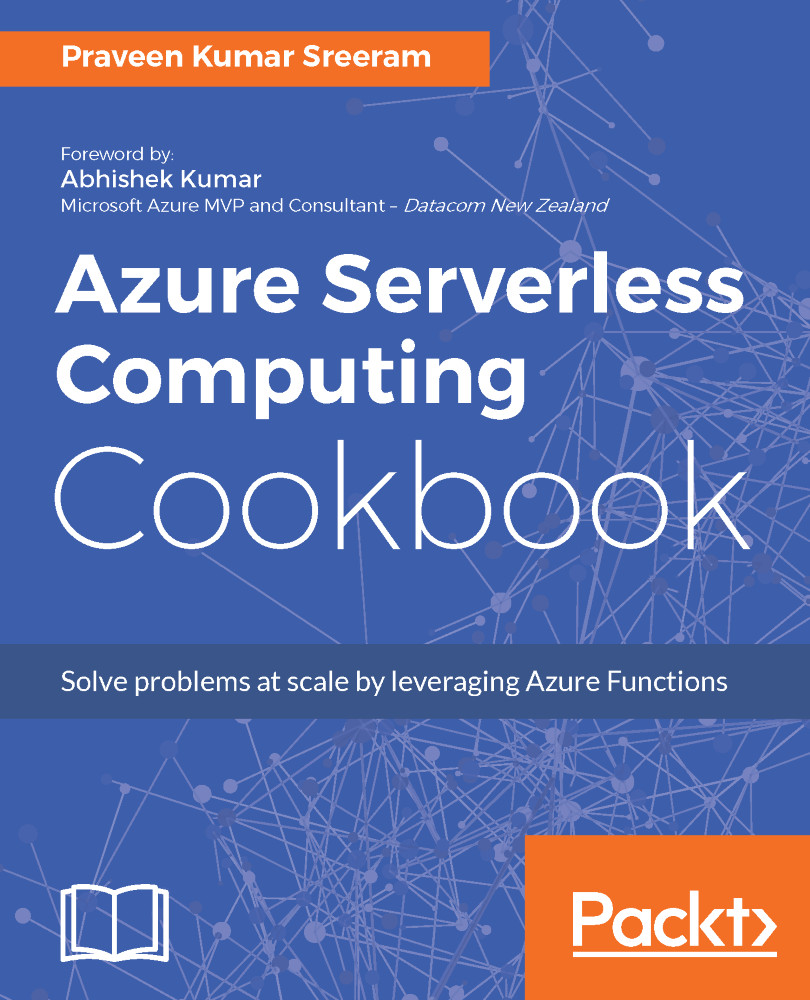In the previous recipe, you learned how to process an individual request and store it in Azure SQL Database. At times, we might have to integrate our custom applications with different CRMs, which would not be exposed to other systems in general. So in these cases, people might share the CRM data via Excel sheets or JSON in some external file storage systems like OneDrive, FTP, and so on.
In this recipe, you will learn how to leverage the Azure Function Runtime and its templates to quickly integrate Azure Functions with OneDrive, retrieve the JSON file, process it, and store the data into Azure SQL Database.
At the time of writing this, external file triggers are in an experimental state. It's not suggested to use them in production yet.



